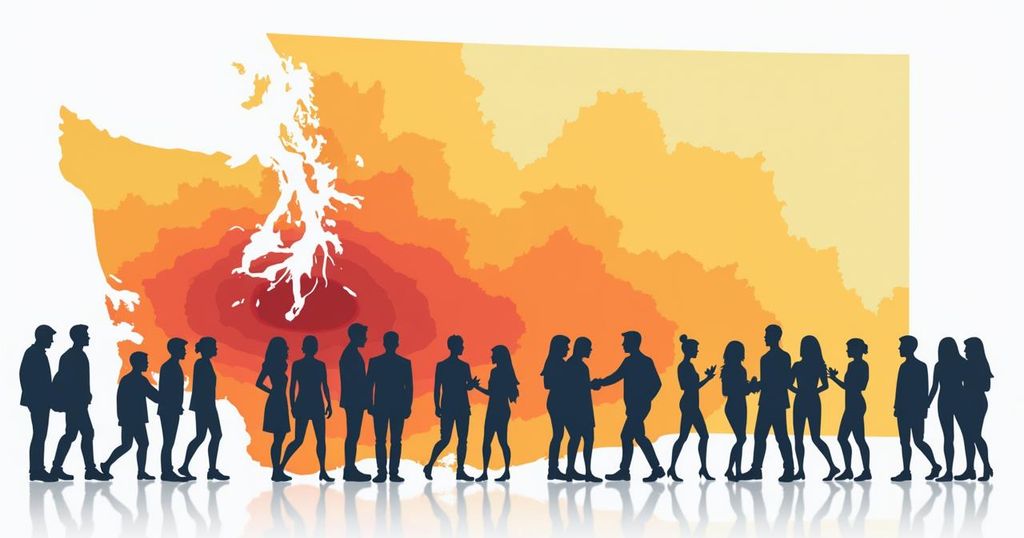Inadequate Earthquake Risk Data Poses Threat to Washington Schools

Washington State public schools are currently facing serious concerns regarding earthquake safety data, with many schools inaccurately labeled as lacking retrofits. Despite the existence of numerous school buildings located in high-risk seismic areas, a substantial number of students do not attend schools with proper evaluations or upgrades. The state has lagged behind in comprehensive safety assessments compared to other regions. The inconsistent data reporting exacerbates the situation, necessitating urgent attention from state officials to ensure student safety.
Recent revelations disclose that significant gaps exist in the earthquake risk data for public schools across Washington State, raising concerns over student safety in the event of a seismic disaster. Although some schools, such as Stadium High School, have undergone substantial seismic upgrades, contrasting information is recorded by the Washington Office of Superintendent of Public Instruction, which inaccurately lists many as lacking retrofits. Over 378,000 students in the state attend schools built prior to modern seismic codes and without adequate evaluations or retrofits. Furthermore, approximately 167,000 students are enrolled in schools classified as having “high” or “very high” seismic risks. The documentation of seismic risks is crucial for assessing vulnerabilities and prioritizing improvements for emergency preparedness. Despite Washington’s proactive measures, other states like California, Oregon, and Utah have advanced further in addressing school seismic safety, having published comprehensive inventories of school seismic risks nearly a decade prior. Legislation in Washington State, however, has adopted a slower approach, which Governor Jay Inslee indicated could prolong the information-gathering process for decades. Scott Black from the Office of Superintendent of Public Instruction recognizes the slow progress, stating, “Slowly we get more money and slowly we get more information.” This slow accumulation of data is compounded by a lack of updated records from several school districts, leading to discrepancies in confirming safety upgrades. Parents and experts alike voice concerns over the obscure nature of this critical data, emphasizing the need for transparency to inform families about the earthquake readiness of their children’s schools. Challenges persist due to inconsistent methodologies used by state agencies to classify school hazards, which vary from the more encompassing assessments of the Department of Natural Resources. Currently, only 28% of schools are marked as having high seismic hazards by the Office of Superintendent of Public Instruction, contrasting starkly with the Department of Natural Resources’s estimate of 70%. Moreover, the absence of a legal requirement for schools to conduct seismic evaluations exacerbates the ambiguity surrounding safety preparedness. Several initiatives intended to compile comprehensive hazard data have lagged, leaving many older schools unassessed and their safety uncertain. Disturbingly, records have revealed that numerous schools that completed seismic retrofits are still unrecognized in state databases, resulting in inflated risk assessments. With the recent Earthquake Safety Project demonstrating the urgent need for revision and accuracy in school safety data, it is clear that Washington schools necessitate comprehensive building evaluations to ensure student safety amidst geological uncertainties. Considering the state’s vulnerability due to its location along numerous fault lines, immediate action is crucial to safeguard the future of the state’s children. As discussions on enhancing public access to seismic data unfold, community leaders and safety experts advocate for increased transparency and systematic upgrades. In conclusion, the lack of accessible, reliable data regarding school seismic safety poses direct threats to potential students in high-risk areas, warranting urgent reforms in policy and data management practices related to public school safety in Washington State.
The article addresses the insufficient data on earthquake risks for public schools in Washington State, emphasizing the safety implications for students in seismic hazard zones. Despite efforts to evaluate and retrofit many schools post-2001 Nisqually earthquake, a large portion of this critical information remains inaccessible to the public. Notably, inconsistencies in data reporting among school districts and state agencies are highlighted, raising alarm about the need for accurate spatial assessments of seismic vulnerabilities. This scenario has prompted discussions about the necessity of comprehensive evaluations and transparent risk data to enhance preparedness and safety standards for Washington schools.
In summary, Washington State’s public schools face significant challenges regarding accessibility and accuracy of seismic risk data. The discrepancies in recorded retrofits and the absence of legal mandates for evaluations threaten student safety in earthquake-prone regions. A shift toward greater transparency and consistent updating of information is essential to address these risks effectively. Stakeholders assert that immediate action is required to safeguard educational environments and to adequately inform communities about the seismic readiness of their schools.
Original Source: washingtonstatestandard.com






